Maintaining a lush lawn can be challenging and occasionally confusing, especially for people with little experience. We can all relate to that because we were all amateurs at first; it can be complicated, confusing, and at times make you want to give up on everything. Thatch removal, in particular, is such a tedious and confusing aspect of lawn care.
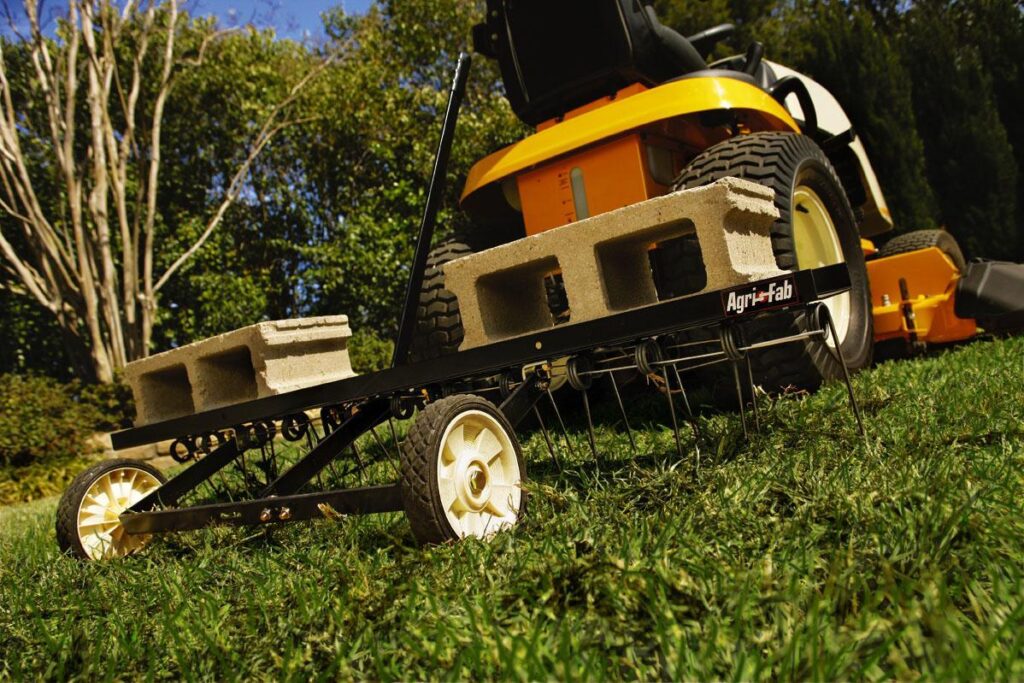
For decent lawn-loving people who just want to get the extra thatch up and out of the way, the terms “power raking” and “dethatching” generate a lot of misunderstanding. Yet, even some lawn care businesses employ these terms interchangeably in their daily operations. These gardening tools do, however, differ in a few significant ways.
The main difference between a power rake and a dethatcher is that the former is more aggressive in removing dead grass and debris than the latter. In fact, the power rake is capable of removing thatch up to four times more effectively than a dethatcher.
However, if the accumulated thatch on your lawn is less than an inch thick, dethatchers will do just fine! Another difference is that power rakes use revolving flails, whereas lawn dethatchers employ spring tines.
A lot of confusion between dethatchers and power usually arises because both services work on similar problems: removing thatch! However, knowing the difference between the two can help you save a lot of time, money, and effort.
Continue reading to learn more!
What Is Thatch? And Is It Bad For Your Lawn!
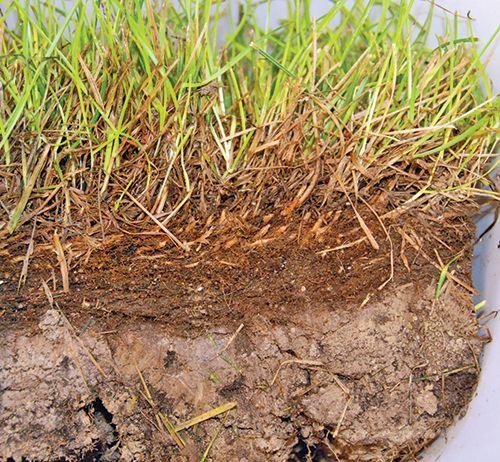
The accumulation of thatch is caused by the failure of stolons, dead grass, fallen leaves, and twigs to decay at an adequate rate. When it is still in its early stages, the problem will consist just of dead stuff laying on the surface of the soil; this can be remedied through power raking. However, the dead organic matter eventually turns into thatch, and when thatch accumulates to an excessive level, it can create a blockade on the surface of the lawn.
A little bit of thatch is usually beneficial for the grass. It helps retain moisture in the soil and protects the grass from heat, cold, and other environmental stresses. However, when thatch becomes more than one inch thick, it will stop air, water, and nutrients from reaching down to the roots, which is highly detrimental to the grass.
It can even cause grass death which will result in the formation of bare patches on your turf. So, at this point, you will need to dethatch or power rake your lawn to break up the dense layer of decaying organic matter that has accumulated, and then you can overseed to make your lawn look more dense and full.
RELATED: Lawn Care Pricing Guide | How Much Should You Pay For Lawn Care?
Is Power Raking And Dethatching The Same Thing?
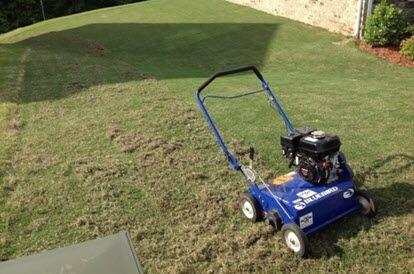
Both power rake and dethatcher are designed to remove thatch from grass. However, while comparing the two, you could ask which of these two tools is more effective at removing thatch and which you should use.
Power Rake
A power rake penetrates the thatch deeply by using a dethatching blade with revolving flails. Use a power rake to remove thatch from your lawn if you see thick layers of brown patches and trash or if you know your grass hasn’t been dethatched in a while.
Dethatcher
On the other hand, a dethatcher is used when you only need to remove a thin layer of organic debris that has begun to decompose. Dethatchers are typically employed for thatch layers that are surface-level and treatable with a light technique.
A few differences between dethatcher and power rake are also mentioned in the table below.
| Power Rake | Dethatcher |
|---|---|
| Power rake is good for removing thick thatch | Dethatcher is better suited for removing thin thatch |
| Power raking is an aggressive process | Dethatching is a light process |
| Power rake uses rotting flails | A dethatcher has spring tines that rotate |
| Power rake is a large and heavy-duty machine | Dethatcher is small sized |
| Results in excessive damage to the turf | Results in lower wear to the turf |
However, we are only beginning to scrape the surface of the differences. In the succeeding sections, we will go into considerable detail. So, keep reading!
Power Raking A Lawn
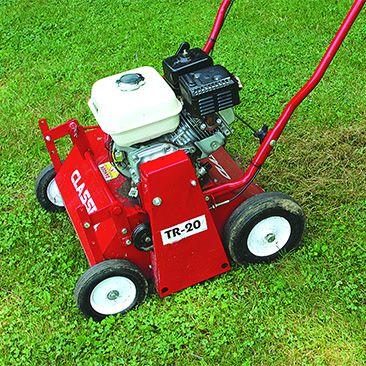
Between the two methods for removing thatch, a power rake is by far the more effective and powerful option. The power rake has a large number of tines that dig deeply into the ground and remove a significant quantity of thatch which is beneficial for repairing severely damaged and ruined lawns. In addition, these machines are of commercial quality, exceptionally long-lasting, and will serve you well for a good many years.
The disadvantage of using a power rake is that it works very aggressively, and it will take your grass some time to recover after the process. If this is your first time using this piece of machinery, you might think you have ruined your yard. However, within a short time, your grass will recover and become even healthier.
Power rake machines are relatively expensive, and because they are only used occasionally, renting them is better than buying them.
How Does A Power Rake Work?
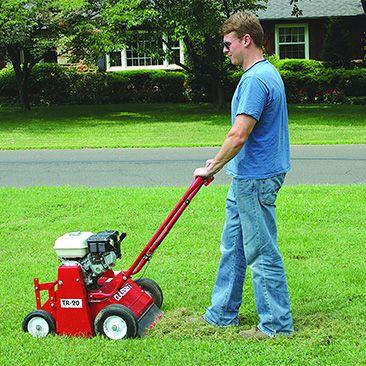
The power rake removes thatch by using a rotating flail.
A power rake uses flails that spin at a moderately high speed to remove the layer of debris from the lawn. The machine loosens and collects the debris, which leaves the soil’s surface far more unveiled than earlier.
Improper mowing and watering practices can cause your lawn to develop a layer of thatch far more quickly. You will also soon notice that your lawn is beginning to turn brown beneath the grass blades. Over time, this layer of clippings, dead grass, and stolons becomes more noticeable, especially after mowing the lawn.
This is the time for power raking the grass since, in some situations, ignoring it for an extended period of time might result in an unusually thick and unhealthy layer of thatch.
How Often Can You Use A Power Rake?
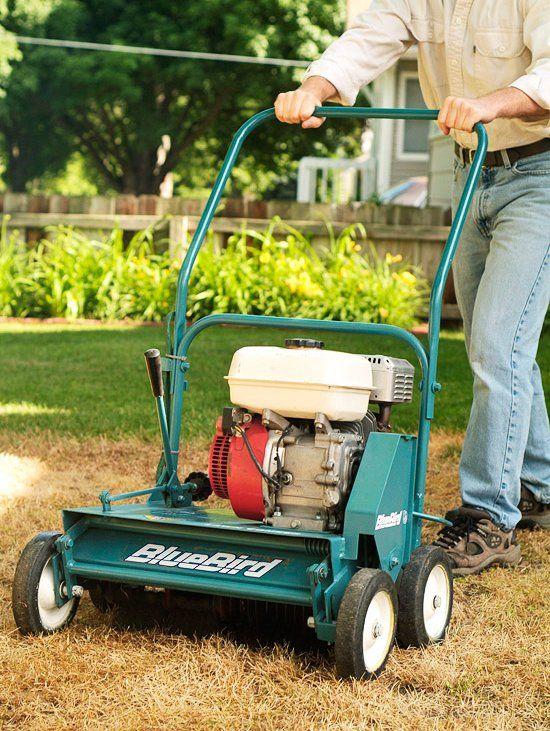
Most people suggest power raking your lawn every two to three years, and some people advocate for power raking the lawn every year. However, if you dethatch your yard every now and then, I don’t think you will ever have to resort to using a power rake again. The power rake is one of those instruments that should only be used as a last resort as it puts the grass under too much pressure.
It is not to say that power rakes are not valuable tools. It is good that they exist, as they have prevented the loss of a significant number of lawns over the years. However, stick with the dethatcher instead of using it if you don’t truly need it.
When To Power Rake Your Lawn?
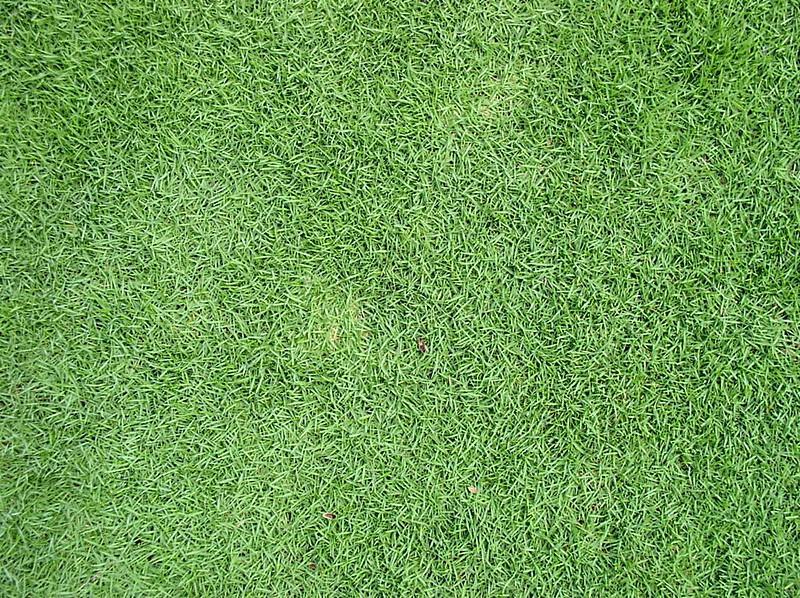
You can power rake your yard when there is a noticeably dense layer of organic debris over the growth of your grass or when your lawn is distressed and mostly yellow. In distress, your grass will develop several brown spots dispersed across its surface.
Nonetheless, here are some general guidelines on when to power rake your lawn:
- The best time to power rake warm-season grasses is in late spring & early summer.
- The best time to power rake cool-season grasses is in early fall or early spring.
During these times, grasses enter their peak growth period, which helps them recover from the power rake damage much more quickly. You can also tell whether or not it is time for power raking your yard by getting down and folding the grass as if you are parting someone’s hair. If you cannot see the surface of the soil, it is time to power rake your lawn.
How To Power Rake Your Lawn?
Here is how to correctly power rake your lawn:
- Make sure that there is more than a quarter of an inch of dead grass over the soil by inspecting the lawn.
- Set the deck on your power rake in the highest possible position and power it up.
- Perform a test pass on the grass to determine the quantity of thatch that is being removed.
- Following that, reduce the height of the power rake deck gradually, one notch at a time, and power rake.
- Systematically rake the entire lawn with the power rake.
- Remove all the leftover debris from the lawn.
- Carry out a second pass traveling in the opposite direction.
- Once again, remove all the loosened-up debris from the surface of the grass.
Power Raking Pros & Cons
To sum it all up, here are a few advantages and disadvantages of power raking your lawn
| Pros | Cons |
|---|---|
| Good for stressed lawns | Expensive |
| Provides heavy-duty performance | Grass needs plenty of recovery time |
| Commercial quality results | Professional help may be required |
| Remove up to ½ inch of thatch |
Dethatching A Lawn
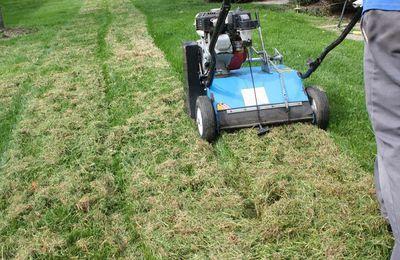
Dethatchers can be rakes, but since I prefer my back the way it is, I’m only going to refer to mechanical dethatchers in this instance. This kind of dethatcher works similarly to a power rake by having several blades hooked to a drum. Typically, light to moderate thatch up to one inch thick is treated with a dethatcher. You should probably use a power rake if you need to remove more than that.
Your lawn will recover from the dethatcher quicker because it is less aggressive than a power rake, and you may even use it more than once a year. Additionally, a dethatcher requires less work than a power rake, even if it is not very simple to use. However, you can stop the thatch from ever becoming too thick using a dethatcher.
RELATED: When, Why & How To Dethatch A Lawn | Tips & Tricks From The Experts
Types Of Dethatchers
Dethatchers come in various types, which are:
Manual Dethatchers
They look very much like rakes, with the exception that the metal tines on the dethatcher are thick and run perpendicular to the handle.
Powered Dethatchers
They utilize a motor to drive the spring tines, so the operator needs to simply push the power dethatcher like they would a lawn mower.
Tow-behind Dethatchers
They are quite similar to manual dethatchers. However, they are trailed behind a mower rather than pulled by hand, saving the user time and effort.
How To Use A Dethatcher?
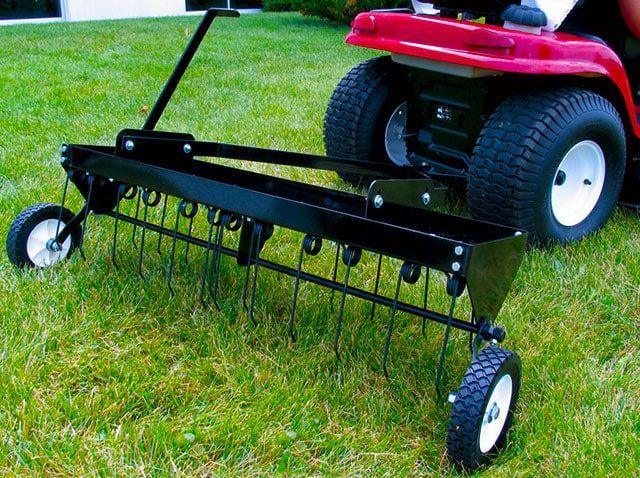
Here is how to correctly dethatch your lawn with a dethatcher:
- Mow the grass shorter than usual.
- Water the lawn to soften up the surface.
- Position the dethatcher and set an appropriate height
- Run the dethatcher over your lawn slowly and steadily.
- Dethatch your lawn once again, but this time in the opposite direction.
- Rake up and dispose of or compost the debris.
How Often Can You Dethatch Your Lawn?
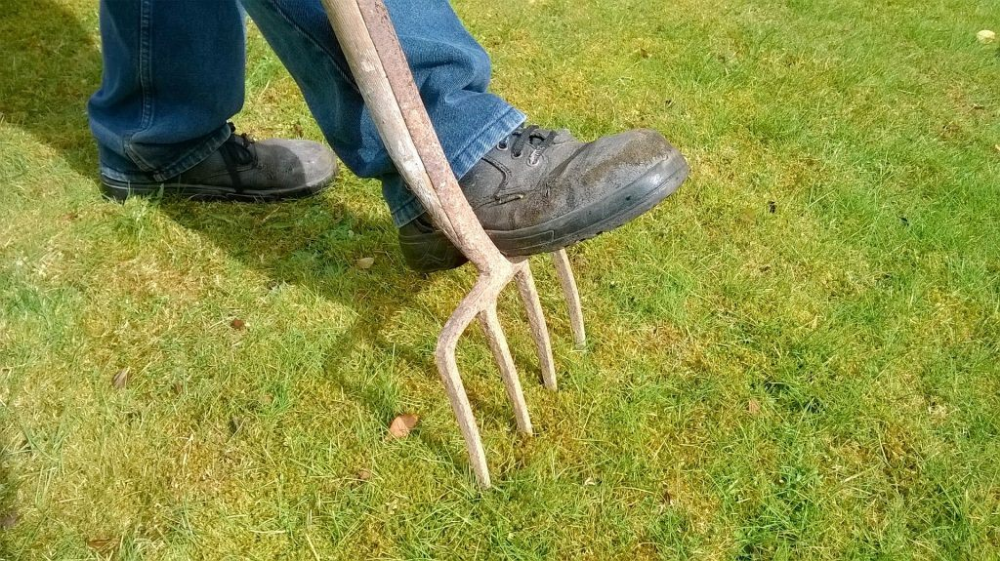
Some grass types require annual dethatching, while others need to be dethatched only once in a few years. The worst offenders are warm-season grasses like Bermudagrass and Zoysiagrass and cool-season grasses like Creeping Bentgrass and Kentucky Bluegrass, which need to be dethatched every year. Other grass varieties require less annual dethatching because their thatch builds up slowly over time.
If you have tall fescue or rye, which are less likely to thatch, you might only need to dethatch once every five years, if at all. In any case, it is a good idea to check your lawn every year to see how much thatch has accumulated.
When To Dethatch Your Lawn?
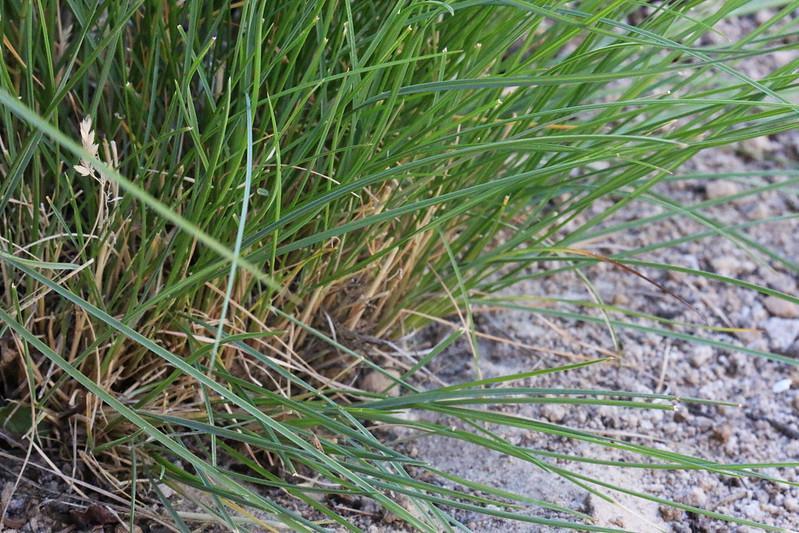
Dethatching a lawn is best done when the grass is actively growing. Additionally, there should be a moderate amount of moisture in the soil, and it is typically desirable to have mowed the lawn a few times before dethatching.
Early spring or early fall is best to dethatch cool-season grasses. It should be noted, however, that if you choose the latter option, the grass should still be growing because it requires time to re-establish before the fall frost season.
On the other hand, late spring through early summer is the best time to dethatch warm-season grasses for the best results.
Dethatcher Pros & Cons
To sum it all up, here are a few advantages and disadvantages of using a dethatcher
| Pros | Cons |
|---|---|
| Dethacher is usually portable and easy to handle | Less powerful than power rake |
| It is more affordable than power rake | Require regular maintenance |
| Dethatcher is beginner friendly | |
| Dethatcher is not very aggressive on grass |
Other Factors to Consider
When searching for equipment to remove the thatch from your lawn, here are a few additional factors you should take into consideration.
Lawn Size
Before purchasing a power rake or a dethatcher, it is vital to consider the size of a lawn. Power is beneficial for large yards as they are more prone to developing thick thatch areas. Also, power rakes can typically be attached to a tractor, so moving them from one place to the other will be much simpler.
However, if the yard is not large enough to justify the power rake purchase, use a dethatcher. A dethatcher is usually an ideal choice for the majority of urban households.
Auxiliary Equipment
If you are considering buying a power rake, you will need to think about how you will pull it, and you will need to check each brand you are considering to make sure that it will connect to your tractor or riding lawn mower.
Power Source
You must consider the power supply if you decide to get a dethatcher. Most contemporary brands use electricity, but you can purchase several models that require you to push the tines. To use an electric dethatcher, you’ll need an outlet and an extension cord that can reach every part of your yard.
Sources For Further Reading
Core aeration and dethatching of lawns – Michigan State University Extension Service
Power Raking or Core Aeration? That is the question! – Kansas State University Turf and Landscape Blog
Managing Thatch in Home Lawns – University of Missouri Extension Service







